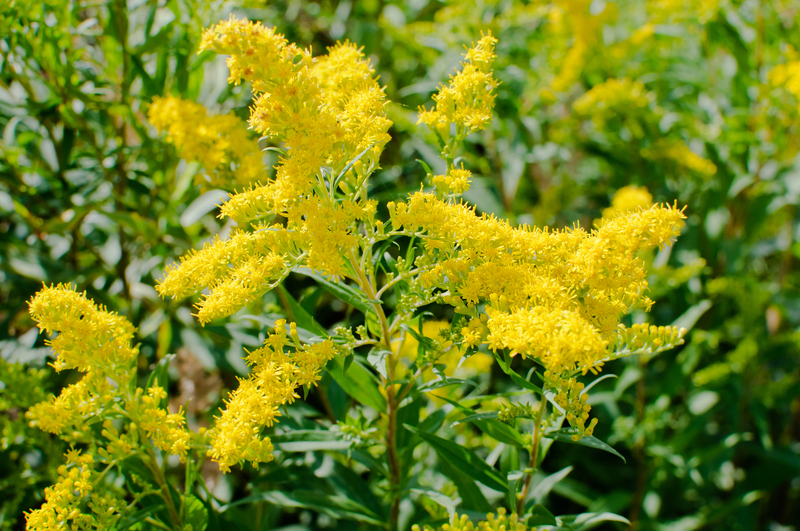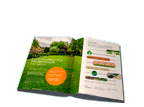Timeless Beauty of English Cottage Gardens
Posted on 16/05/2025
Timeless Beauty of English Cottage Gardens
The English Cottage Garden is a picturesque and enchanting space that has captivated hearts for centuries. These gardens, with their wisteria-draped arbors, overflowing flower beds, and meandering paths, reflect a style that is both romantic and practical. Beyond their undeniable visual appeal, they continue to offer a unique gardening experience that blends nature with art. This article delves into the timeless beauty of English Cottage Gardens, exploring their history, distinctive features, and tips for creating your own enchanting haven.
The Charm of English Cottage Gardens
The charm of English Cottage Gardens lies in their unpretentious beauty. Unlike more formal gardens, cottage gardens are characterized by their informal and somewhat chaotic arrangement of plants. This style dates back to the 16th century when peasants used their small plots of land to grow both ornamental and edible plants. Over the years, these functional gardens evolved into the stunning, flower-filled landscapes we see today.

Key Features of an English Cottage Garden
To capture the quintessential charm of an English Cottage Garden, consider incorporating the following elements:
- Diverse Planting: A hallmark of cottage gardens is the variety of plants grown in close quarters. Flowers, herbs, vegetables, and shrubs are planted together to create a tapestry of color and texture.
- Curved Pathways: Meandering paths made of gravel, bricks, or stepping stones guide visitors through the garden, inviting exploration.
- Traditional Plants: Classic cottage garden plants include roses, foxgloves, delphiniums, hollyhocks, and lavender. Climbers like wisteria and ivy are often trained over arches and trellises.
- Architectural Elements: Rustic fences, stone walls, arbors, and garden benches add structure and charm to the garden.
- Wildlife Friendly: Cottage gardens are designed to attract bees, butterflies, and birds, promoting biodiversity.
Creating Your Own English Cottage Garden
Designing an English Cottage Garden requires planning and patience. Here are some tips to help you get started:
- Start Small: Begin with a small area and gradually expand as you gain confidence. This allows you to experiment with planting combinations and understand the maintenance required.
- Choose the Right Plants: Opt for plants that thrive in your climate and soil conditions. Consider mixing perennials, annuals, and bulbs to ensure year-round interest.
- Plant Densely: Cottage gardens should look full and overflowing. Plant closely to reduce gaps and help prevent weeds.
- Encourage Vertical Growth: Use trellises, obelisks, and arches to encourage climbers like roses and clematis to grow vertically, adding layers to your garden.
- Use Natural Materials: Incorporate natural materials like stone, wood, and gravel to maintain an authentic, rustic feel.
Pros and Cons of English Cottage Gardens
Pros:
- Beauty and Variety: The diverse planting scheme creates a visually stunning garden throughout the year.
- Wildlife Habitat: Attracts a wide range of beneficial insects and birds, promoting a healthy ecosystem.
- Heritage and Romance: Offers a nostalgic and romantic appeal that connects gardeners with the past.
- Low Maintenance: Once established, cottage gardens require less maintenance than formal gardens due to their naturalized planting style.
Cons:
- Initial Effort: Setting up a cottage garden can be labor-intensive and time-consuming.
- Potential for Overgrowth: Without regular upkeep, the dense planting may become chaotic or overcrowded.
- Plant Selection: Requires careful selection of plants to ensure they thrive in the given conditions.
Tips for Maintaining an English Cottage Garden
- Regular Pruning: Keep plants healthy and promote blooming by pruning regularly. Deadhead spent flowers to encourage more blooms.
- Mulching: Use organic mulch to retain soil moisture, suppress weeds, and improve soil structure.
- Soil Health: Add compost or manure annually to replenish nutrients and maintain soil fertility.
- Monitor Watering: Ensure plants get adequate water, especially during dry spells. Use soaker hoses or drip irrigation for efficient watering.
- Weed Control: Regular weeding is essential to prevent unwanted plants from taking over.

Takeaways
Creating and maintaining an English Cottage Garden is a rewarding endeavor that offers both aesthetic and ecological benefits. Here are the key takeaways:
- Embrace a variety of plants for a rich tapestry of colors and textures.
- Incorporate traditional architectural elements for added charm.
- Foster biodiversity by creating a wildlife-friendly environment.
- Plan your garden design carefully, starting small and expanding over time.
- Maintain your garden with regular pruning, mulching, and soil care.
Conclusion
The timeless beauty of English Cottage Gardens lies in their harmonious blend of natural elements and human creativity. These gardens offer a sanctuary of serenity and an opportunity to connect with nature in a deeply personal way. Whether you're a seasoned gardener or a novice, the charm of an English Cottage Garden is sure to captivate and inspire you. By following the tips and insights provided, you can create your own small corner of paradise, where beauty and biodiversity thrive together.





 Certified and experienced landscapers
Certified and experienced landscapers




 Get a Quote
Get a Quote